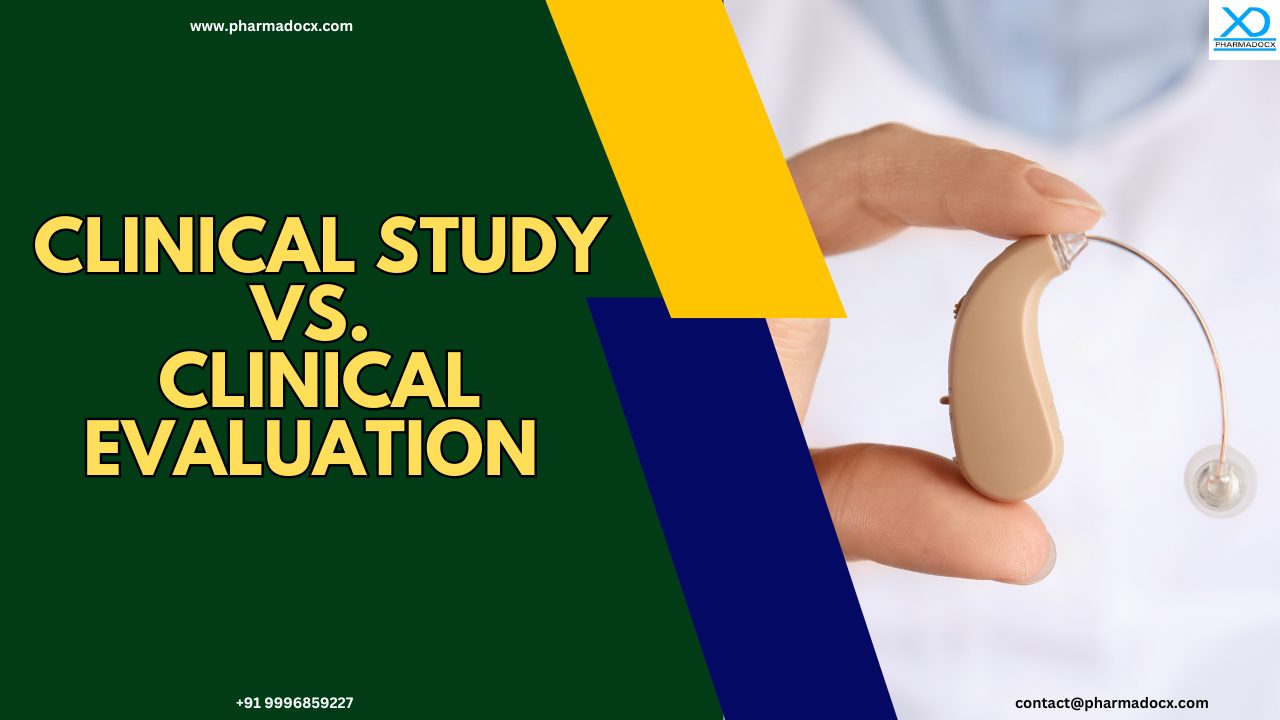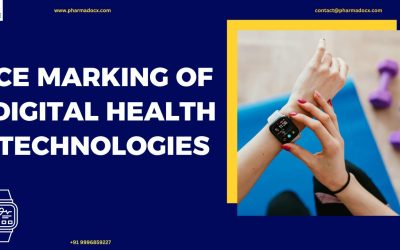Clinical study and clinical evaluation of medical devices are common regulatory requirements for market approval. These terms are often used interchangeably. However, they have different purposes, are used in different situations, and have different protocols. Hence, we have prepared this detailed guide on clinical study vs. clinical evaluation to help you navigate regulatory requirements. To understand the differences between clinical study and clinical evaluation, it is important to have a clear idea of the terms. Hence, we have provided a brief introduction to the terms. Additionally, we have highlighted when should each of them be performed.
What is clinical study of a new medical device?
Clinical study involves testing a novel medical device on human participants to collect primary data on its safety, efficacy, and performance. This research study aims to determine whether the new medical device is safe and effective for humans. The study usually compares the new device to an existing one or a placebo to see if it offers any benefits. Clinical studies help advance medical knowledge and are vital for testing new ways to diagnose, treat, and prevent diseases. Thus, the crucial data obtained on the safety and effectiveness of the new medical device will help doctors make informed decisions. Globally, most regulatory frameworks require clinical studies for novel and innovative medical devices. They demand these studies to secure data on how the medical device works in real-world conditions.
Notably, for conducting clinical studies obtaining informed consent is mandatory. Furthermore, studies should follow Good Clinical Practice (GCP) guidelines. Additionally, oversight by ethics committees or institutional review boards (IRBs) is mandatory for conducting clinical studies.
Clinical studies take considerable amount of time and require significant investment. However, they are necessary to prove that the new medical device is safe and effective for release in the market.
Types of clinical studies
- Interventional studies or clinical trial: In interventional studies, participants receive specific interventions, such as new medical devices. Then, researchers evaluate the effects on health outcomes. Example: Testing a new wearable glucose monitor for diabetes management.
- Observational studies: On the other hand, in observational studies, researchers observe participants without assigning interventions. These studies are useful for identifying risk factors, disease progression, or treatment patterns. Example: Studying how a particular lifestyle affects heart disease in different populations.
When should a clinical study be performed?
- When a new or innovative medical device is launched
- If there is insufficient data on safety and effectiveness of a device
- When launching your product in a highly regulated markets, such as the EU
Why does clinical study for medical device matter?
- For securing regulatory approval from regulatory bodies
- Ensuring safety and efficacy of new medical devices before releasing them for patient use
- For advancing medical knowledge and improving patient outcomes by validating new medical devices
What is clinical evaluation of medical devices?
Clinical evaluation is required when the medical device has some existing relevant clinical data. This data could have been obtained from previous studies, post-market surveillance, or real-world use. Hence, under this scenario, instead of conducting a complete clinical study, a clinical evaluation maybe conducted. Clinical evaluation is a systematic and structured process of analyzing existing data to demonstrate the safety and performance of a medical device. It is an ongoing process of collecting, analyzing, and assessing clinical data. The medical device’s intended purpose, benefits, risks, and usability in a clinical setting are thoroughly evaluated. Notably, the major difference between clinical study and clinical evaluation is that clinical evaluation does not involve new human trials. Instead, it collects and evaluates information from scientific literature, market data, etc. The key sources of data for clinical evaluation are as follows:
- Clinical trials: Data from interventional studies on the medical device
- Scientific literature: Peer-reviewed studies on the medical device or similar devices
- Registries and databases: National or international health data repositories containing information on the new medical device.
- Post-market surveillance: Real-world data obtained from the device in use in the market after approval.
Most regulatory authorities will demand evidence demonstrating the medical device will provide the intended benefits without undue risk to patients. Hence, clinical evaluation is crucial for demonstrating conformity with regulatory requirements.
What does clinical evaluation involve?
- Analysis of existing clinical data from scientific literature, previous clinical trials, and post-market surveillance records.
- Assessment of device performance. An analysis of whether the medical device achieves its intended purpose is performed.
- Risk-benefit analysis of the medical device is performed. Whether the benefits outweigh the risks associated with using the medical device is analysed.
- A comparison is done with similar devices. Benchmarking of the device against equivalent technologies is done.
When is clinical evaluation of medical devices required?
- If the medical device has been previously used and has supporting clinical data
- When there are published studies on similar medical devices
- If post-market surveillance data supports the medical device’s safety, effectiveness, and benefits
6 Key aspects of clinical evaluation
- Clinical evaluation is not a one-time event. It is a continuous and systematic process that occurs throughout the device’s lifecycle.
- Clinical evaluation primarily requires collecting clinical data from various sources, including previous clinical trials, literature reviews, and post-market surveillance.
- Clinical evaluation is based on verification of safety and performance. It aims to confirm the medical device is safe for its intended use and performs as claimed by the manufacturer.
- Clinical evaluation also includes identifying potential risks associated with the medical device and understanding how well these risks can be mitigated.
- Clinical evaluation assesses whether the device provides the intended clinical benefits to patients. It analyses whether the benefits outweigh the risks associated with using the medical device.
- Proper documentation is a critical component of clinical evaluation. The findings of the clinical evaluation have to be documented in the clinical evaluation report (CER). The CER should include device description and intended use and a summary of the clinical data reviewed. Additionally, it should include a brief analysis of safety and performance of the data. Moreover, it should include conclusions and provide some recommendations. Thus, CER serves as evidence of the medical device’s conformity to regulatory requirements.
9 key differences between clinical study and clinical evaluation of medical devices
We have highlighted the major differences between clinical study and clinical evaluation of medical devices.
| Parameter | Clinical Study | Clinical Evaluation |
| Definition | A research investigation involving human participants to assess the safety or effectiveness of a medical device. | A systematic assessment of clinical data to verify the safety and performance of a medical device. |
| Purpose | To generate new clinical data through direct testing. | To analyze existing clinical data (from studies, literature, or post-market surveillance). |
| Data source | Primary data from trials (e.g., RCTs, observational studies). | Secondary data from literature, previous clinical trials, registries, and post-market surveillance. |
| Regulatory role | Often mandatory in strict markets. Required for high-risk devices or novel technologies. Supports regulatory approval | Required for continued market approval. Mandatory under most regulatory frameworks to demonstrate conformity with safety and performance requirements. |
| Method | Involves human participants | Uses published studies, historical data, and market reports |
| Output document | Clinical Study Report (CSR) | Clinical Evaluation Report (CER) |
| Cost and time | Time consuming and expensive | Faster process and less expensive |
| When is it required | During product development or post-market studies. | Throughout the product lifecycle i.e., pre-market and post-market. |
| Who conducts it | Clinical researchers, CROs, investigators. | Regulatory specialists, clinical evaluators, medical writers. |
Thus, a medical device clinical study may be conducted to generate data that feeds into a clinical evaluation. On the other hand, clinical evaluation will assess all available data (including from clinical studies) to support regulatory submissions and ongoing compliance. Clinical evaluation is required to demonstrate continued conformity with safety and performance requirements.
Pharmadocx Consultants: Supporting you in every step of your regulatory journey
We at Pharmadocx Consultants understand the difficulty of navigating clinical study and clinical evaluation requirements for medical devices. Our team has expertise in most global medical device regulatory guidelines. Drop an email at [email protected] or call/Whatsapp on 9996859227 and we will be happy to help you with all your medical device regulatory queries. With our support navigating medical device regulations will be a cake walk.





